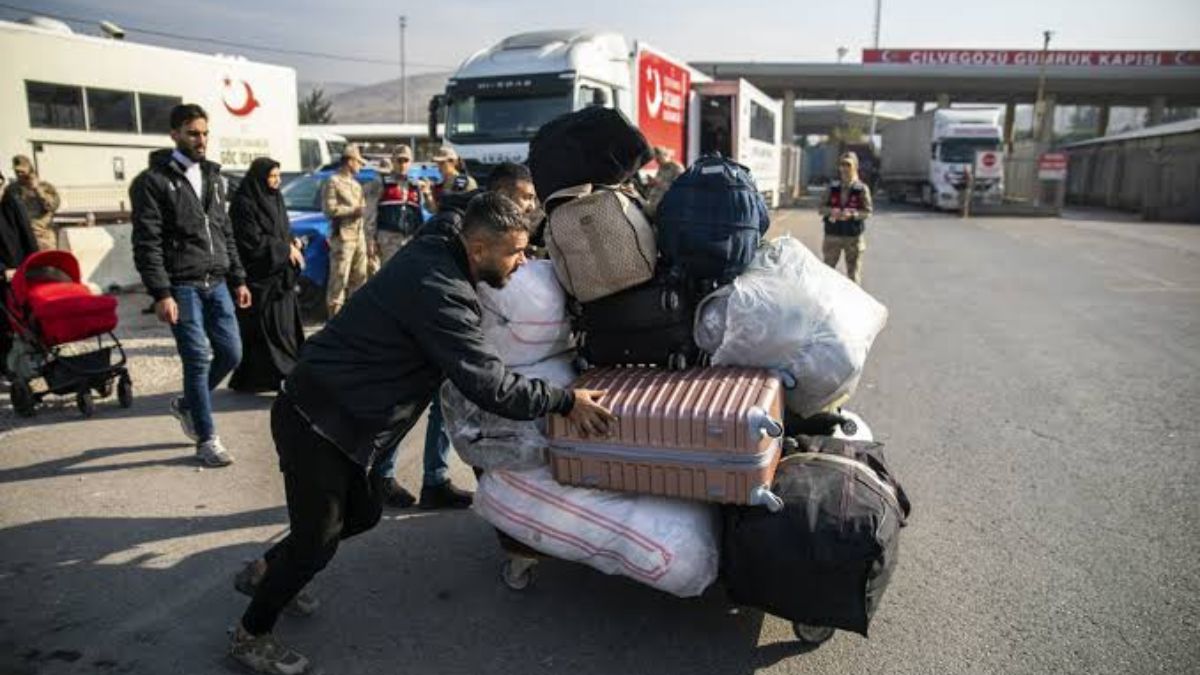Lebanon's refugee dilemma: The uncertain future of Syrians returning home
 Syrian refugees returning home | X
Syrian refugees returning home | X
The return of Syrian refugees from Lebanon is widely viewed as a positive development, but it also highlights a complex dilemma.
The fall of Assad’s regime in December 2024 and the beginning of a new transitional government headed by Ahmed al-Sharaa have set a new stage for the Syrian refugee crisis. Since then, the Lebanese government, the United Nations High Commissioner for Refugees (UNHCR), and the International Organization for Migration (IOM) have launched a new program to assist what they term the ‘voluntary’ return of Syrian refugees. The number of returnees from Lebanon is constantly increasing; recent reports from the Arida crossing – the Northern border between Lebanon and Syria – highlight logistical and administrative failures of the Syrian side.
The reports of refugees facing delays and bureaucratic hardships pose critical questions: Is Syria ready to accept all its returning refugees? Does it have enough infrastructure to accommodate the new arrivals? How is the transitional government responding to the situation? These are some fundamental questions that need examination.
Lebanon has a significant number of refugees per square kilometer, making it the largest refugee-hosting country in the world. According to the UNHCR estimation, the country holds 1.5 million Syrian refugees and 11,238 of other nationalities. With the deepening economic and political crisis, the situation in Lebanon has become worse for both its citizens and refugees.
The ongoing crisis on the southern borders with Israel, along with its worst socio-economic conditions in decades, makes living difficult. The population, including the refugees, faces a sharp increase in poverty, with limited access to critical supply chains, including food, healthcare, education, and other basic services. As per the estimation, more than half of the Lebanese population lives below the poverty line, while 9 out of 10 Syrian refugees need humanitarian assistance to meet their basic needs.
According to UNHCR figures, 1.5 million Syrians reside in Lebanon, with only 716,312 officially registered. These refugees are scattered and living in various localities, including Bekaa (265,892), North Lebanon (214,363), Beirut (161,561), and South Lebanon (74,496). Out of the total registered refugees, more than half (51.9 percent) are under 18 years, and 51 percent of the refugees are female. Since the fall of Assad’s regime, almost 168,000 Syrian refugees returned from Lebanon, and it is expected to increase in the upcoming months.
Meanwhile, UNHCR estimates that 843,994 Syrian refugees returned from neighboring countries. The condition of refugees remained the same, facing significant challenges after they arrived in Syria. These challenges include destroyed infrastructure, a broken economy with a lack of employment and services, and insecurity from violence in certain places. However, these challenges create a devastating “triple bind” involving a combination of resource deficit, market failure, and insufficient social protection. This shows the absorption of refugees in Syria is still debatable, and the country may struggle in accepting a large influx of returning refugees.
In contrast to the existing integration and absorption problem, the transitional government is finding ways to absorb the refugees. On Thursday of last week, an official meeting took place at the ministry’s headquarters in Damascus between Mohammad Anjrani, Minister of Local Administration and Environment, and representatives of IOM. It aims to support the return of Syrian refugees and enhance the capabilities of local administrations, given the high rate of returnees. During the meeting, Minister Anjrani emphasized the importance of restoring affected areas and building capacity for local institutions to support the returnees. IOM pledged to support the Syrian government in its efforts and provide other humanitarian assistance.
The future of returning Syrian refugees remains deeply uncertain. Lebanon’s worsening socio-economic conditions make prolonged refugee presence increasingly difficult. Yet, Syria’s lack of infrastructure, political instability, and resource limitations are challenging the returnees. As the transitional government seeks international support, much will depend on whether meaningful reconstruction occurs and whether the global community remains engaged. For now, the fate of millions of Syrian refugees lies between two struggling states: Will Lebanon or Syria be able to provide the security and stability they desperately need?
The author is a doctoral candidate at the Centre for West Asian Studies, Jawaharlal Nehru University, New Delhi.
Middle East